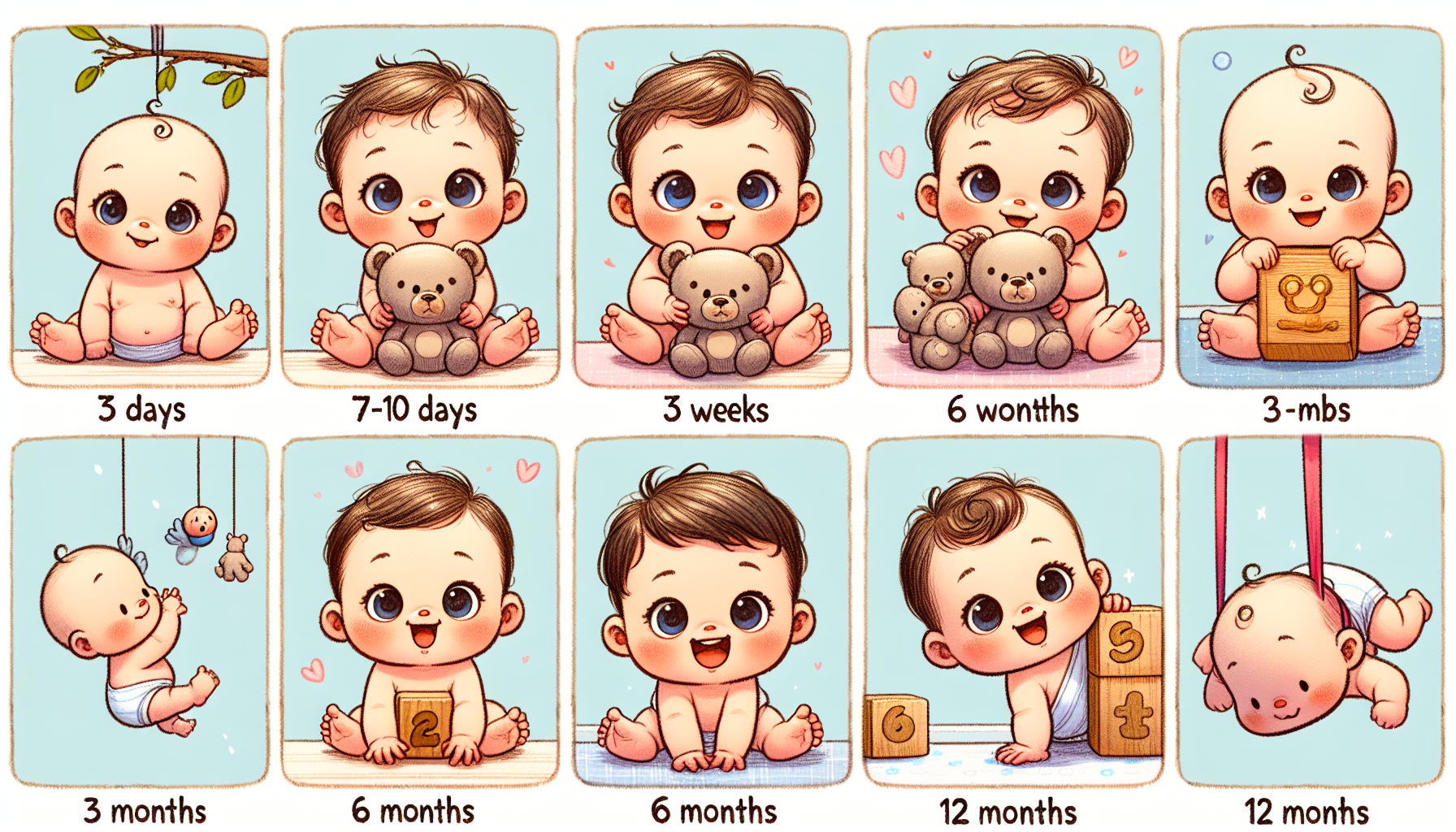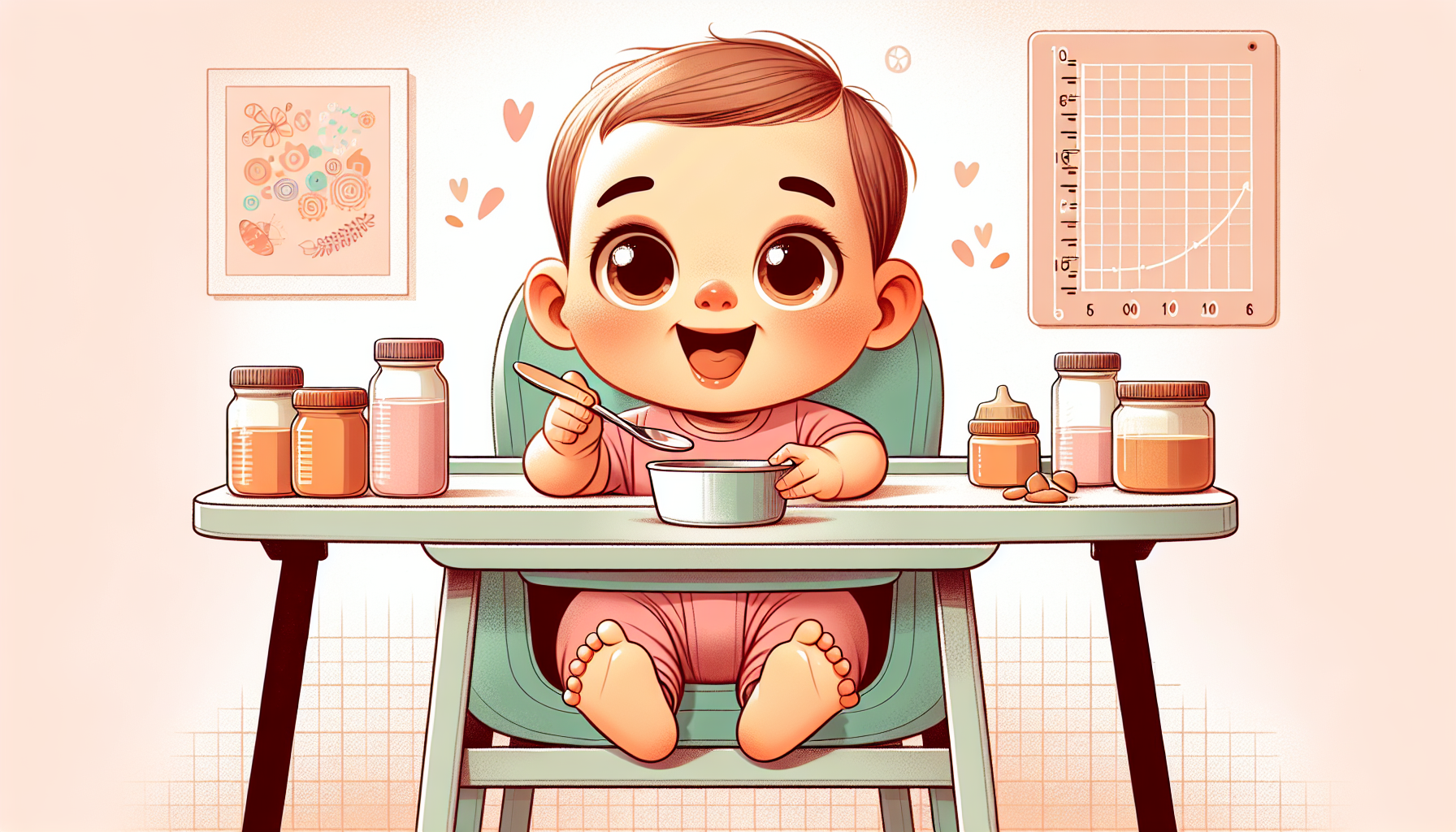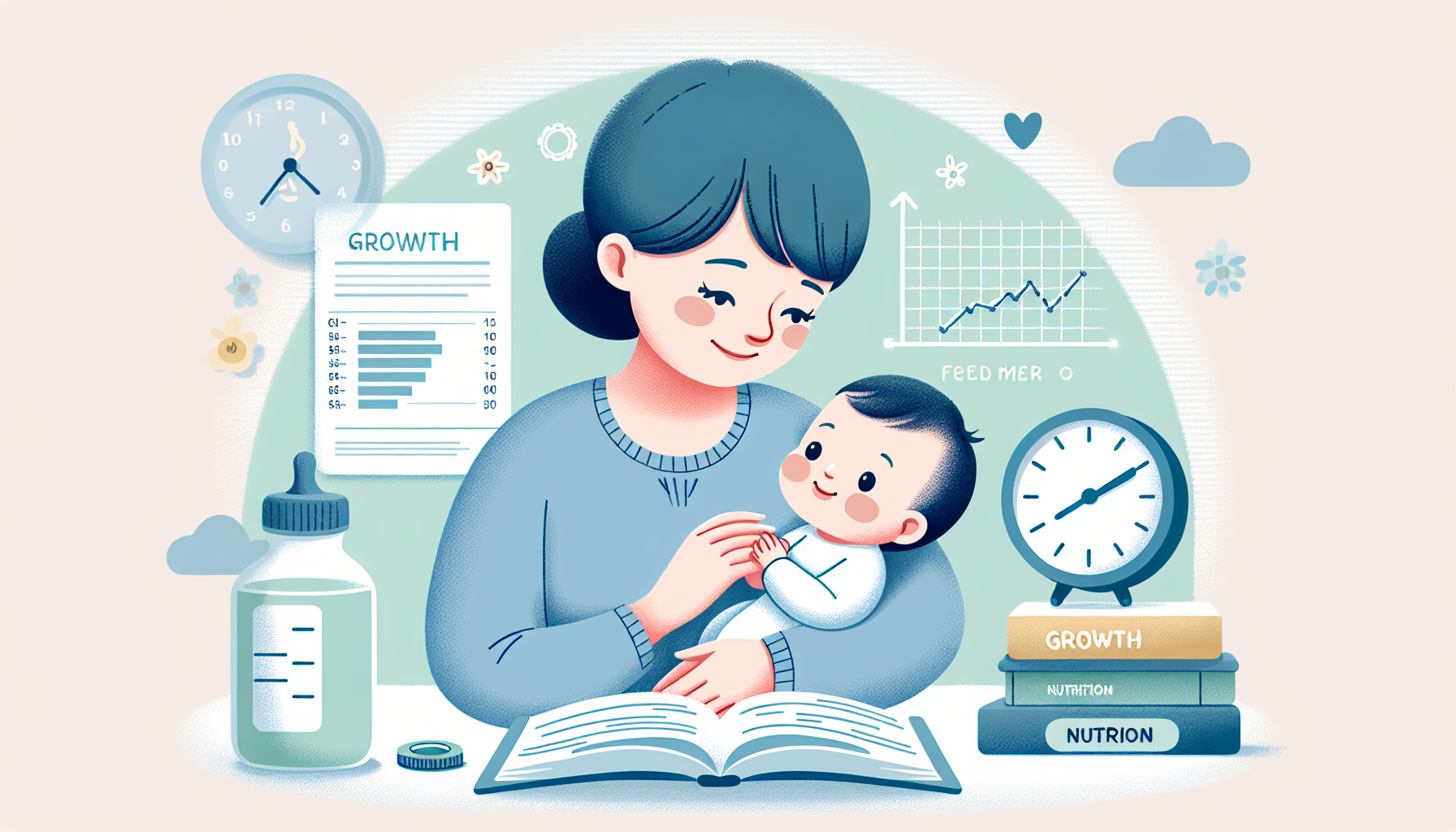
Navigating Your Baby's Spurt Growth: Key Ages, Signs, and Parenting Tips
If you’re tracking your baby’s milestones, understanding spurt growth is vital. During a baby’s first year, growth spurts can change feeding and sleep patterns abruptly. Our article offers insights on when these spurts typically occur and outlines the signs and tips you need for nurturing during these rapid developmental periods, ensuring your little one thrives every step of the way.
Key Takeaways
-
Baby growth spurts are periods of rapid physical development occurring at key stages in the first year and are characterized by increased length, weight, and head circumference.
-
Recognizing the signs of a baby’s growth spurt, such as increased hunger, disrupted sleep patterns, and mood changes, allows parents to adjust care and feeding schedules to support their child’s development.
-
Adequate nutrition and sleep are essential during growth spurts, and parents should be proactive in responding to their baby’s needs and seeking professional advice if they have concerns about their child’s growth or behavior.
Decoding Baby Growth Spurts: Understanding the Basics

A baby’s first year is a whirlwind of changes and growth. Growth spurts, periods of intense, rapid growth within a short span, are particularly significant during this time. During these spurts, your baby undergoes considerable physical changes. They:
-
Expand about 10 inches in length
-
Potentially triple their birth weight
-
Experience rapid weight gain
-
Experience an increase in head circumference
These baby growth spurts occur at different stages and can be identified by certain baby growth spurt signs. It’s important to remember that growth spurts happen, so parents should be prepared for these changes in their baby’s growth.
Understanding a baby’s growth spurts, their timing, and symptoms can help you better meet your baby’s changing needs and ensure they are growing and developing healthily. Being able to decode your baby’s growth spurt signs can help you adapt to their feeding and sleep schedules, ultimately promoting their overall well-being.
The Timeline of Baby's Growth Spurts

While growth spurts can occur at any time during a baby’s first year, they typically happen at key ages. These include when your baby is:
-
7-10 days old
-
3-6 weeks old
-
3 months old
-
6 months old
-
9 months old
You may also notice a baby’s growth spurt in addition to the usual growth spurts around your baby’s first birthday.
Each growth spurt is a unique period of rapid growth. For instance, at three months, a typical spurt entails your baby growing about 1 to 1.5 inches in length and gaining 1.5 to 2 pounds in weight. Recognizing when these growth spurts occur can help you anticipate and respond to your baby’s changing needs effectively.
Recognizing the Signs of a Growth Spurt

Now that we understand when growth spurts typically happen, it’s crucial to recognize the baby growth spurt symptoms. The primary signs include increased hunger, disrupted sleep patterns, and mood changes. Each of these signs can manifest in various ways such as increased feeding frequency, sleep variations, and emotional and behavioral shifts.
Recognizing these signs can help you support your baby through this natural part of their growth and development.
Increased Hunger and Feeding Frequency
One of the most noticeable signs of a growth spurt is a sudden increase in your baby’s hunger and feeding frequency. During a growth spurt, your baby might demonstrate cluster feeding, which involves back-to-back nursing sessions that typically peak between 3 and 6 weeks old.
As a parent, it’s crucial to respond to these early hunger cues like rooting, licking of lips, and putting hands to mouth, which indicate your baby’s increased need to eat during a growth spurt. Whether you’re breastfeeding or formula-feeding, make sure to offer more frequent feeds or increased quantities of formula to satisfy your baby’s increased hunger.
Sleep Variations During Growth Phases
Sleep patterns, including babies sleep, also tend to change during growth spurts. Each baby is unique and may exhibit different sleep variations. Some infants may sleep more, while others may experience more frequent awakenings and disrupted sleep, including shorter naps or earlier waking times.
Research suggests that there is a direct correlation between increased sleep and growth in body length, indicating that sleeping patterns are tied to growth spurts. So, while sleeping more could indicate a growth phase, waking up more often could also signal growth needs such as increased feeding.
Understanding your baby’s sleep variations during growth phases can help you better support them through these crucial periods of development.
Emotional and Behavioral Shifts
In addition to changes in hunger and sleep patterns, growth spurts can also bring about emotional and behavioral shifts in your baby. During a growth spurt, babies commonly exhibit emotional and behavioral shifts such as becoming more clingy, fussy, and unsettled.
Increased fussiness can be a reaction to their rapidly growing bodies, or it might stem from feelings of hunger or fatigue. However, it’s important to note that while fussiness is normal during a growth spurt, persistent discomfort or distress is not. So, if your baby is persistently crying or showing signs of distress, it’s best to consult with a healthcare provider.
Feeding Your Growing Baby: Nutrition and Milk Supply

Proper nutrition is vital during a baby’s growth spurts. Whether you’re breastfeeding or formula-feeding, it’s important to respond to your baby’s hunger cues during these periods. This may include offering an extra bottle to formula-fed infants or nursing more frequently if you’re breastfeeding.
For breastfeeding mothers, maintaining a strong milk supply is crucial. This can be achieved by breastfeeding frequently, especially in the first few weeks, including night feeds, and maintaining personal hydration and nutrition.
After the first six months, babies should continue to be breastfed while introducing additional iron-rich foods to meet their evolving nutritional needs.
The Role of Sleep in Infant Growth
Sleep is not just for rest; it plays a crucial role in your baby’s growth. During non-REM sleep, infants release the growth hormone somatotropin, which is essential for physical development. According to the World Health Organization, maintaining a healthy sleep pattern is vital for your baby’s overall well-being.
However, a lack of adequate sleep can negatively impact an infant’s growth, underscoring the need for proper rest. Adequate sleep also contributes to effective brain development in infants, forming the basis for future learning and cognitive functions. Therefore, it’s important to maintain a consistent bedtime routine, even during a growth spurt, to promote better sleep quality in infants.
When to Contact Your Child's Healthcare Provider
While navigating your baby’s growth spurts can be an exciting journey, it’s important to know when to seek professional advice. Growth spurts do not typically cause limb pain, so the presence of such pain may warrant contacting a healthcare provider.
If you have concerns about your baby’s growth spurts, don’t hesitate to discuss them with your pediatrician. Keeping a close eye on your baby’s growth is essential to detect any potential issues such as illness or disease. Remember, it’s always better to ask questions and seek professional advice when in doubt.
Encouraging Developmental Progress During Growth Spurts

As parents, you can play a significant role in encouraging your baby’s developmental progress during growth spurts. Engaging in activities such as tummy time can strengthen your baby’s neck and shoulder muscles. Play that encourages reaching and grasping can aid in the development of fine motor skills.
It’s also beneficial to introduce diverse objects and engage in back-and-forth ‘conversations’ with your baby to encourage language skills. Providing a variety of sensory experiences, including different textures and sounds, can stimulate your baby’s cognitive development during a growth spurt. Remember, every activity and interaction with your baby during these periods of growth can play a part in their overall development.
Else Nutrition Toddler Nutrition Supplement around 12 months, to help with baby's growth and development

As your baby grows and develops, you might want to consider supplementing their diet with Else Nutrition Toddler Complete & Balanced Nutritional Supplement. This plant-based, Clean Label certified nutritional supplement is designed for toddlers 12 months or older. It’s a great alternative to cow’s milk and soy formulas, providing a choice besides dairy.
Else Nutrition Toddler Formula is packed with Omega 3 & 6 fatty acids, essential amino acids, and more than 20 essential vitamins and minerals. This ensures your little one, whether a formula fed baby or not, gets all the nutrients they need for their growth and development during this crucial period.
Managing Parental Stress and Self-Care
Navigating your baby’s growth spurts can be a challenging yet rewarding experience. It’s important to manage your stress and take care of yourself during these times. Enlisting help for household chores and cooking can alleviate some of the stress.
Remember, each baby grows at their own pace, so avoid comparing your baby’s growth to others. If you’re breastfeeding, you may feel more hungry and thirsty than usual during your baby’s growth spurt, so make sure to take care of your nutrition and hydration needs as well. After all, taking care of yourself is an important part of taking care of your baby.
Summary
Navigating your baby’s growth spurts is an essential part of their first year of life. Recognizing the signs of a growth spurt, understanding their timeline, and knowing how to respond to your baby’s changing needs can help you support your baby’s growth and development. Remember, each baby is unique, and there is no one-size-fits-all approach to parenting. Stay attuned to your baby’s cues, consult your pediatrician when in doubt, and most importantly, enjoy this exciting journey of growth and discovery with your little one.
Frequently Asked Questions
What are baby growth spurts?
Baby growth spurts are periods of intense and rapid growth that occur within a short span, especially in the first year of a baby's life. These spurts are crucial for their development.
When do growth spurts typically occur in a baby's first year?
Growth spurts typically occur in a baby's first year at around 7-10 days, 3-6 weeks, 3 months, 6 months, and 9 months, with additional spurts often occurring at 12 months. Plan for these growth spurts in your baby's developmental journey.
What are the signs of a growth spurt?
If your baby is showing increased hunger, disrupted sleep patterns, and mood changes, these may be signs of a growth spurt. Keep an eye out for these changes and consult with your pediatrician if needed.
How can I support my baby's growth during a growth spurt?
You can support your baby's growth during a growth spurt by responding to their hunger cues, maintaining proper nutrition, and encouraging developmental progress through activities that support motor skills, language development, and cognitive growth. This will help ensure their overall well-being and development.
When should I contact my child's healthcare provider during a growth spurt?
Contact your child's healthcare provider if your baby shows signs of persistent discomfort or distress, or if you have concerns about their growth.
The content and advice provided in this article is for informational purposes only and is not a substitute for medical diagnosis, treatment, advice for specific medical conditions. Always consult a pediatrician to understand the individual needs of your child. The article expresses the views of the brand editor.


